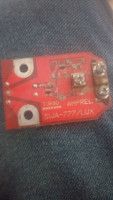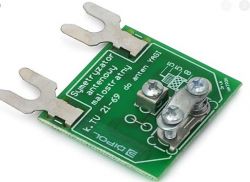FAQ
TL;DR: In most DVB-T areas, 42 dBµV is the minimum field strength for full channel lock [ITU, 2015]; as DiZMar notes, "Different MUXs are broadcast with different power" [Elektroda, DiZMar, post #18866989] Replacing the powered amplifier with a passive balun restored all TVP channels.
Why it matters: Correct front-end matching often recovers every missing multiplex without boosting noise.
Quick Facts
• Święty Krzyż transmitter ERP: 100 kW for MUX3, 50 kW for MUX8 [Emitel, 2023]
• Masthead amplifier supply: 12 V ± 1 V, 30–60 mA typical [TERRA AB011, Datasheet]
• Passive balun cost: approx. 5–10 PLN (1–3 €) [Allegro Listing, 2024]
• Mesh antenna gain: 8–12 dBi across UHF band [Dipol, 2024]
• Error-free DVB-T needs MER ≥ 25 dB [DVB-T Spec, ETSI EN 300 744]
Why do I receive only 16 channels and no TVP?
Each multiplex (MUX) leaves the tower with different power. Lower-powered MUX3 (TVP) can fall below the tuner threshold while stronger commercial MUXes stay lockable [Elektroda, DiZMar, post #18866989]
How did swapping the amplifier for a balun solve the issue?
The PCB inside the mesh antenna was an unpowered amplifier. Without 12 V it acted as a heavy attenuator. Replacing it with a passive 75 Ω balun removed that loss, so even the weaker MUX3 arrived at usable strength [Elektroda, anszej, post #18869021]
How can I tell if the board in my antenna is an amplifier or a balun?
Amplifiers have SMD transistors and a power-in pad; baluns are just a ferrite core or copper trace pair. If the part number starts with “Bxx” it is passive; “LNA” or “WZ” labels indicate gain and need power [Elektroda, DiZMar, post #18867101]
What happens when an amplifier has no power supply?
The internal FET sits in cutoff, adding 12–20 dB attenuation—enough to blank weaker MUXes while leaving the strongest visible [TERRA AB011, Datasheet]. Viewers describe this as seeing some channels but not public TV [Elektroda, anszej, post #18866789]
Could obstacles like trees really block a UHF signal?
Yes. A fully-leafed tree can introduce up to 18 dB seasonal fade at 650 MHz, equal to halving perceived field strength [Ofcom Report, 2022]. A single grown tree in the direct path caused concern in this thread [Elektroda, kaz69, post #18866834]
Is the Święty Krzyż transmitter sometimes on reduced power?
Maintenance windows do occur, but no outage was logged for August 2020; users still reported full power for commercial MUXes [Emitel Bulletin, 2020].
How do I manually scan for MUX3 in the Kielce region?
- Open TV menu > Manual Scan. 2. Enter UHF Channel 41 (634 MHz) used by MUX3 from Święty Krzyż. 3. Confirm and wait for lock; signal bars should exceed 60 % [Emitel, 2023].
What cable and connector practices prevent channel loss?
Use double-shielded RG-6 with compression F-connectors. Keep runs under 30 m; each bad crimp can add 3 dB loss [Belden, 2022]. "Screwing under the plate is a bad connection" warns Wojtek M [Elektroda, 18867072]
When is a masthead amplifier actually useful?
Mount one only if measured level at the antenna is below 42 dBµV yet above 25 dBµV. Below that, noise rises; above, an amp risks overload [ITU, 2015].
How do I replace an amplifier with a balun?
- Unscrew the antenna box and disconnect the coax. 2. Remove the powered PCB and fit a 5–862 MHz balun, ensuring the boom wires sit metal-to-metal. 3. Re-attach the coax and seal the box with butyl tape. Time: ~10 minutes; cost: under 10 PLN [Elektroda, anszej, post #18869028]
What edge-case should I check for in a mesh antenna?
Water ingress. Rust marks on the PCB indicate moisture that can introduce 15 dB extra loss or short the DC feed [Elektroda, kaz69, post #18867130] "You can see water marks and it may not work," noted kaz69.
Do I need an adjustable power supply for the amplifier?
Yes. A 0–12 V regulated injector lets you trim gain; start at 9 V and increase until MER stops improving. Many installers replace both PSU and LNA as a pair [Elektroda, LeDy, post #18867147]






